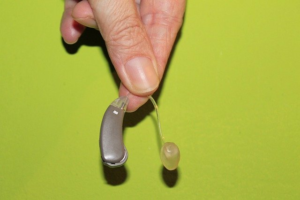Why filter bank design is critical for effective hearing aids | MDO – Medical Design & Outsourcing
[Photo courtesy of Widex USA]
The choice of filter bank is key for recreating natural sound in hearing aids.
Dana Helmink, Widex USA
Modern hearing aids are a medical technology marvel, specifically in the area of digital audio processing. They capture sound waves, convert them to digital signals, process them through the device, then deliver a new sound wave to the ear automatically optimized for the setting and we…….
[Photo courtesy of Widex USA]
The choice of filter bank is key for recreating natural sound in hearing aids.
Dana Helmink, Widex USA
Modern hearing aids are a medical technology marvel, specifically in the area of digital audio processing. They capture sound waves, convert them to digital signals, process them through the device, then deliver a new sound wave to the ear automatically optimized for the setting and wearer. Digital audio processing is not new, but when it’s done through a medical device like a hearing aid, it can change lives for the better.
One in every eight Americans aged 12 and older has hearing loss in both ears, and a majority would benefit from treatment. If left unaddressed, hearing loss can contribute to significant cognitive decline, in addition to depression, anxiety and isolation. Meanwhile, studies suggest that socialization and daily participation in everyday life — often enabled by hearing aids — boost cognitive function, helping to keep the brain stimulated. Basically, the worse you hear, the less you participate. The less you participate, the worse for your cognitive health.
The importance of signal processing: volume versus clarity
For hearing aid wearers, the challenge isn’t just about hearing more (volume). It’s about hearing better (clarity). For example, if you’re in a noisy restaurant, you don’t want the noise to be louder. The best hearing aids help wearers limit background sounds so they can clearly understand the words people say. And hearing aid technology sometimes gets in the way of that clarity.
Hearing aids sound “tinny” and artificial when there’s a delay in sound processing. Most hearing aids today take 5-8 milliseconds to process sound. That may not seem like a long time, but when coupled with direct, immediate sound that enters the ear canal by passing through or around the earpiece, the resulting sound is distorted and unnatural. That’s why signal processing is so important. How long it takes and the techniques manufacturers employ can make all the difference.
Overall, most digital hearing aids process sound almost the same. A microphone picks up sound waves and converts them into a digital signal. An analysis filter bank splits the signal into multiple frequency bands, which can then be compressed, amplified and processed depending on the listening situation. After that, the bands are brought back together in a synthesis filter bank and that’s what’s heard through the hearing aid ear tip.
This approach underscores how important filter banks are for digital signal processing. Choosing the right filter bank is key to natural-sounding hearing aids.
Choosing a filter bank
Frequency-domain filter banks are the popular choice for …….
Source: https://www.medicaldesignandoutsourcing.com/hearing-aid-design-choosing-filter-bank-natural-sound/







